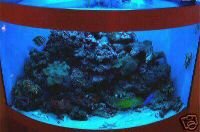Esra
Aquarium Advice Freak
Hi,
I just bought some new lights for my tank and one of them is a blue kind of one.
I think it says Actinic or something.
Anyway it brings out the colours of the fish great when used with a white light too.
Anyway i noticed that when i turn off the white lights and just have the actinic running it looks just like some of the moonlights i have seen people using here.
Can i use this as a moonlight?
It's a 36" 30W Actinic light.
Thanks
I just bought some new lights for my tank and one of them is a blue kind of one.
I think it says Actinic or something.
Anyway it brings out the colours of the fish great when used with a white light too.
Anyway i noticed that when i turn off the white lights and just have the actinic running it looks just like some of the moonlights i have seen people using here.
Can i use this as a moonlight?
It's a 36" 30W Actinic light.
Thanks

